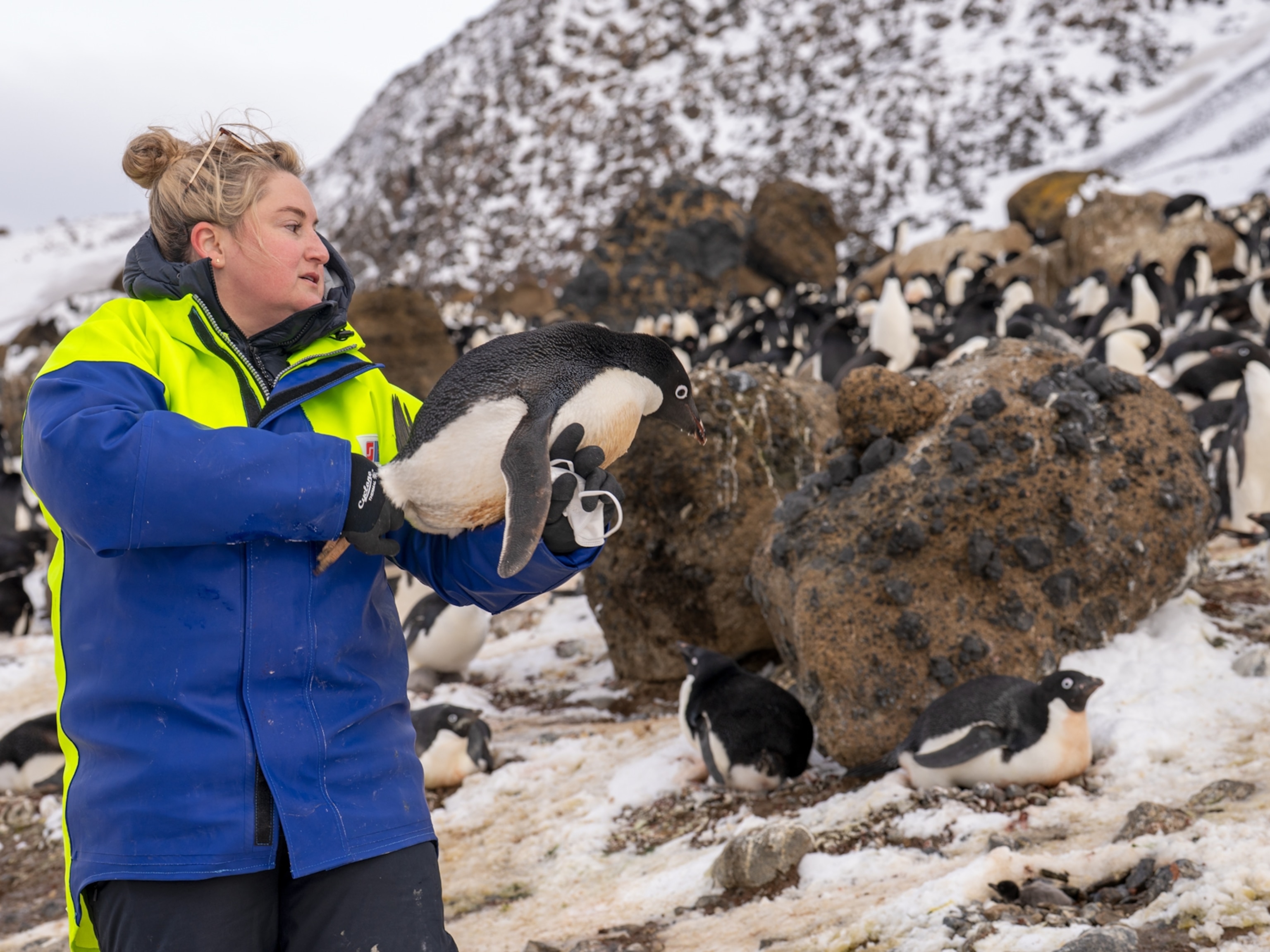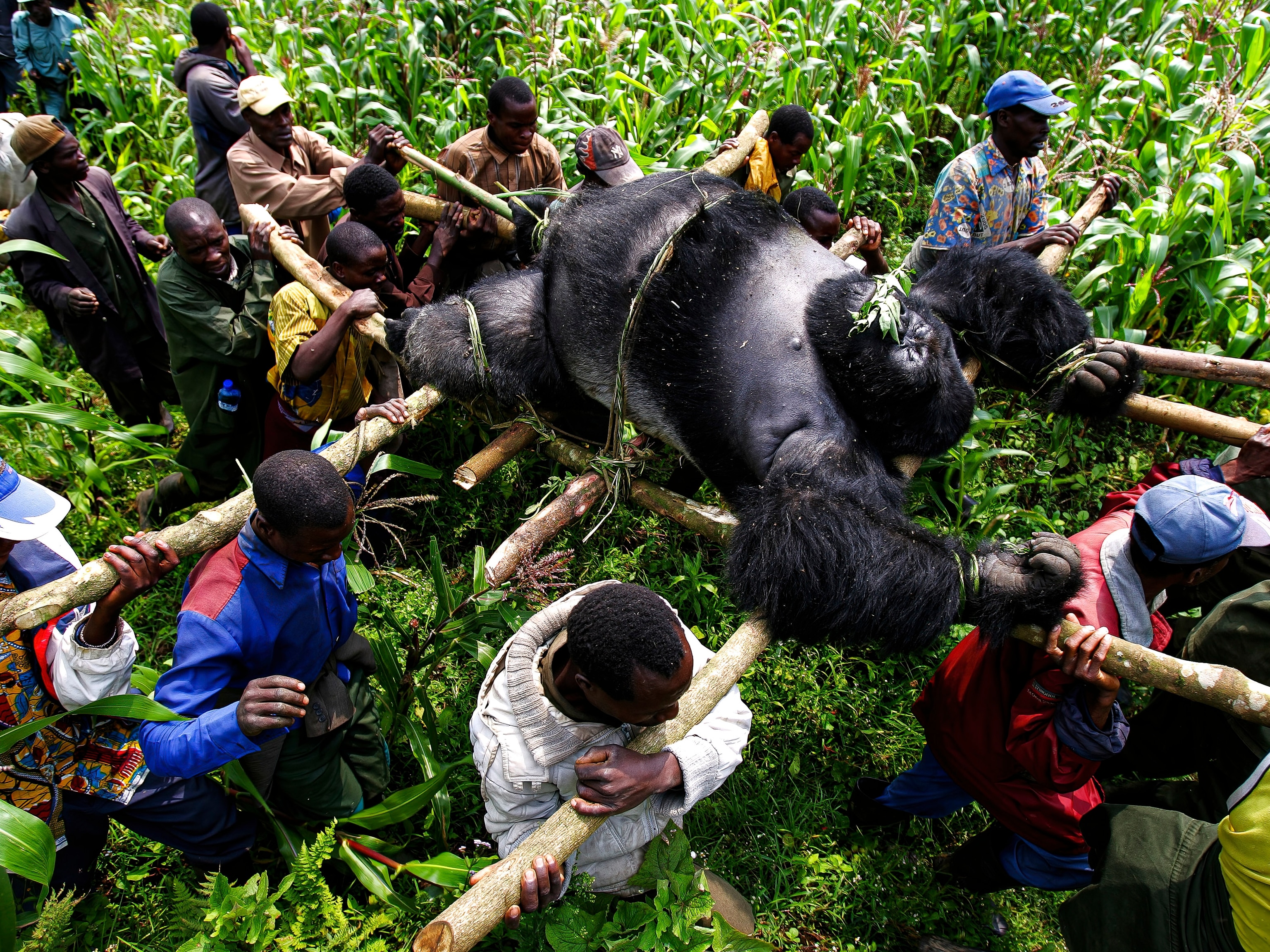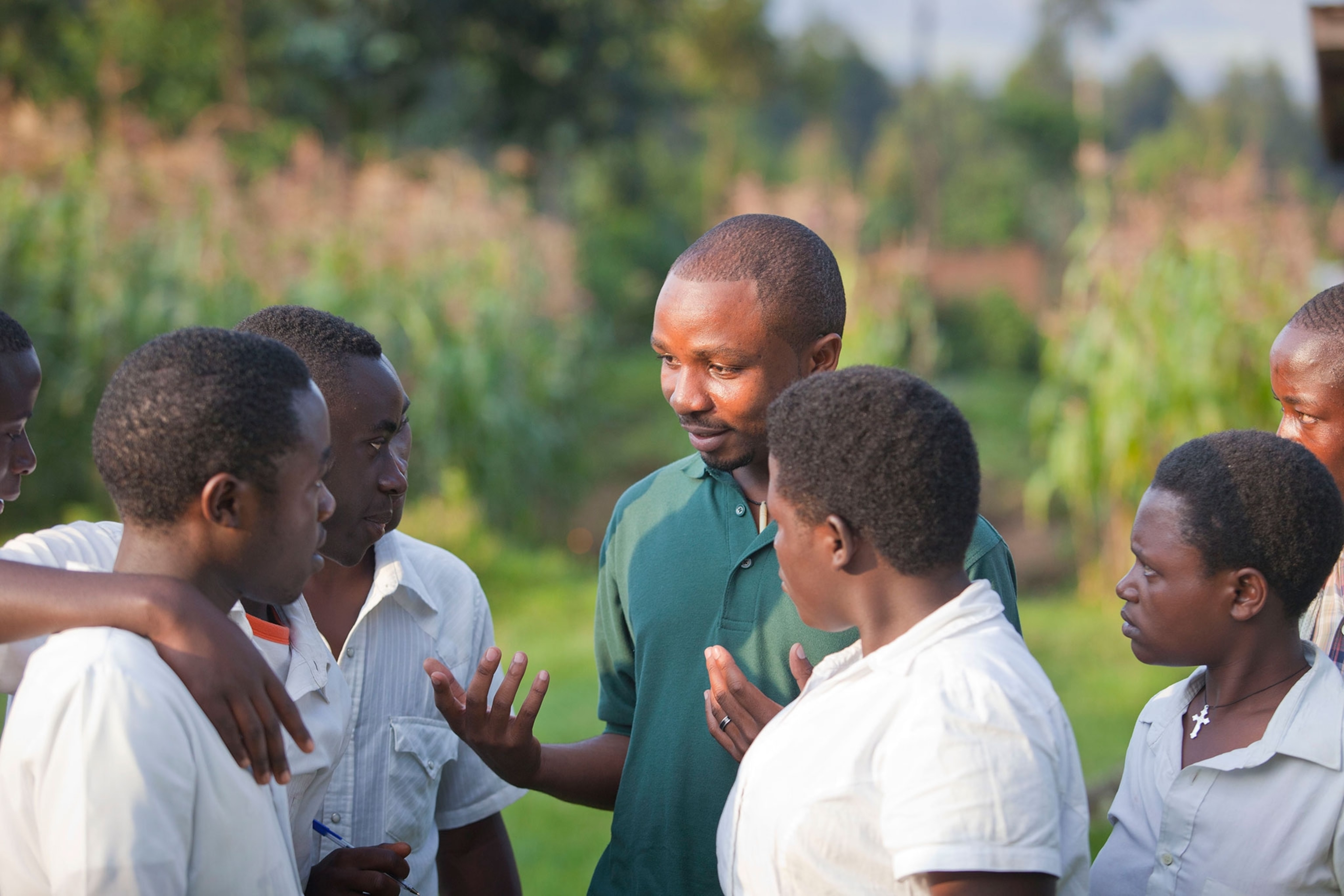
Saving Rwanda's Endangered Species, One at a Time
Veterinarian Olivier Nsengimana is driving the rescue of the gray crowned crane.
Many conservationists devote careers to saving one endangered species. Barely into his 30s, Rwandan Olivier Nsengimana is well into helping rescue and revive two.
Soon after receiving a degree in veterinarian medicine in 2010, Nsengimana became a field veterinarian with Gorilla Doctors, a nonprofit providing medical care and rescue to critically endangered free-range and orphaned eastern lowland gorillas and mountain gorillas in Rwanda, Uganda, and the Democratic Republic of the Congo.
But the well-publicized plight of Africa’s gorillas and ongoing conservation efforts have overshadowed the drastic decline of the gray crowned crane. Over the past four decades, its population in the wild has plummeted 80 percent to less than 500 in Rwanda. Crimped by shrinking wetlands habitat and widespread poaching, the striking bird—with gray, black, white, and gold feathers, red throat, and wispy crown—is prized as a status symbol to those who own them, while their eggs and feathers are sometimes sought after for their purported medicinal value.
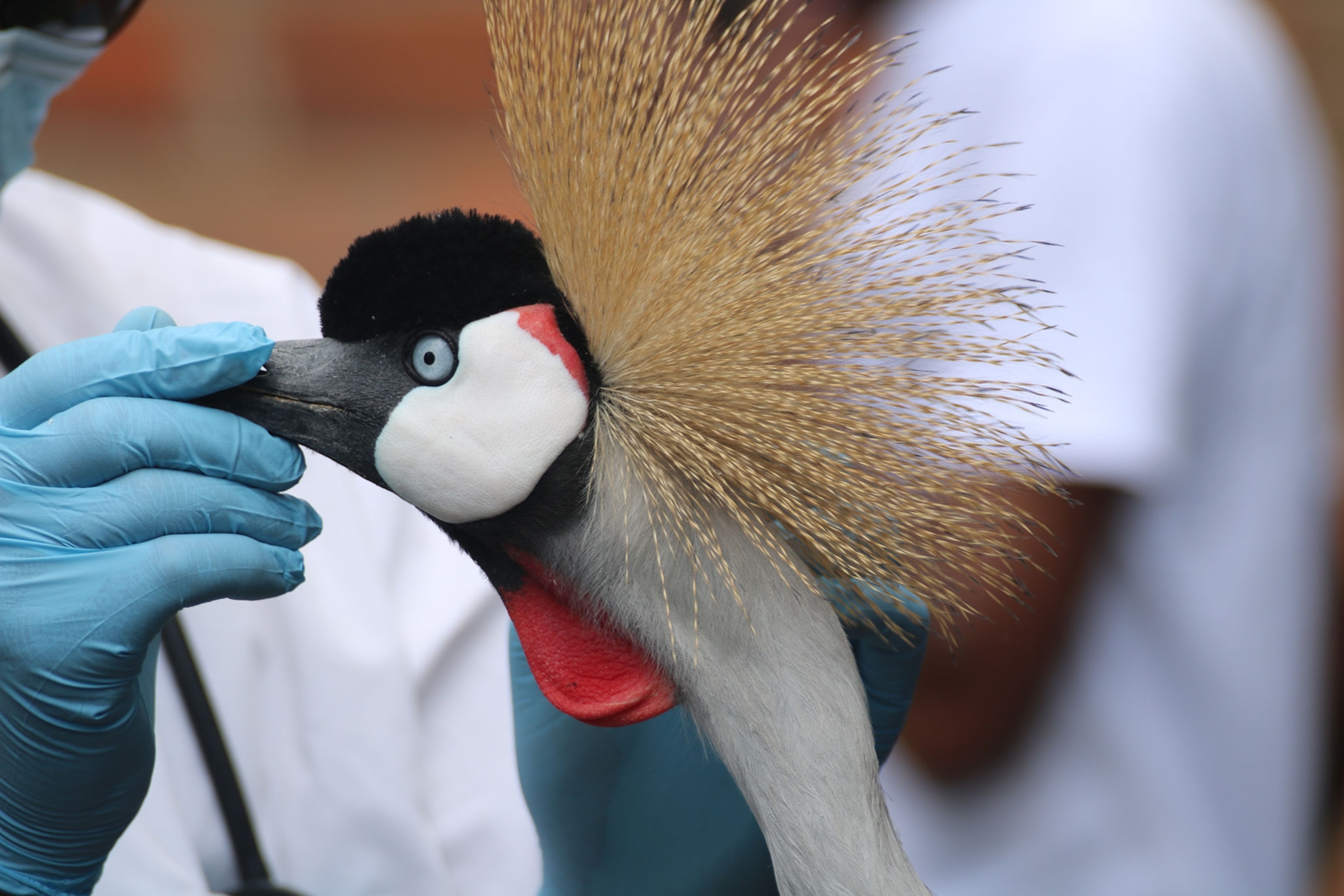
As a child in a village in post-genocide Rwanda, Nsengimana developed a fascination for the cranes as they danced and chirped in the marshes he navigated while fetching water. Empowered by his five years with Gorilla Doctors and learning about captive cranes dying from improper diet with their wings clipped and unable to breed, he stepped in to help.
“I realized that maybe it was important spending time to help another species, because if we did nothing, they would become extinct,’’ says Nsengimana, 32.
Bolstered by a 2014 Young Laureate grant from the Rolex Awards for Enterprise, Nsengimana is working relentlessly to stop poaching, encourage habitat protection, and reintroduce captive cranes back into the wild. He's employing low-tech efforts, such as educational comic books, to promote anti-poaching efforts among young people while high-tech efforts, including aerial drones, are enhancing field monitoring.
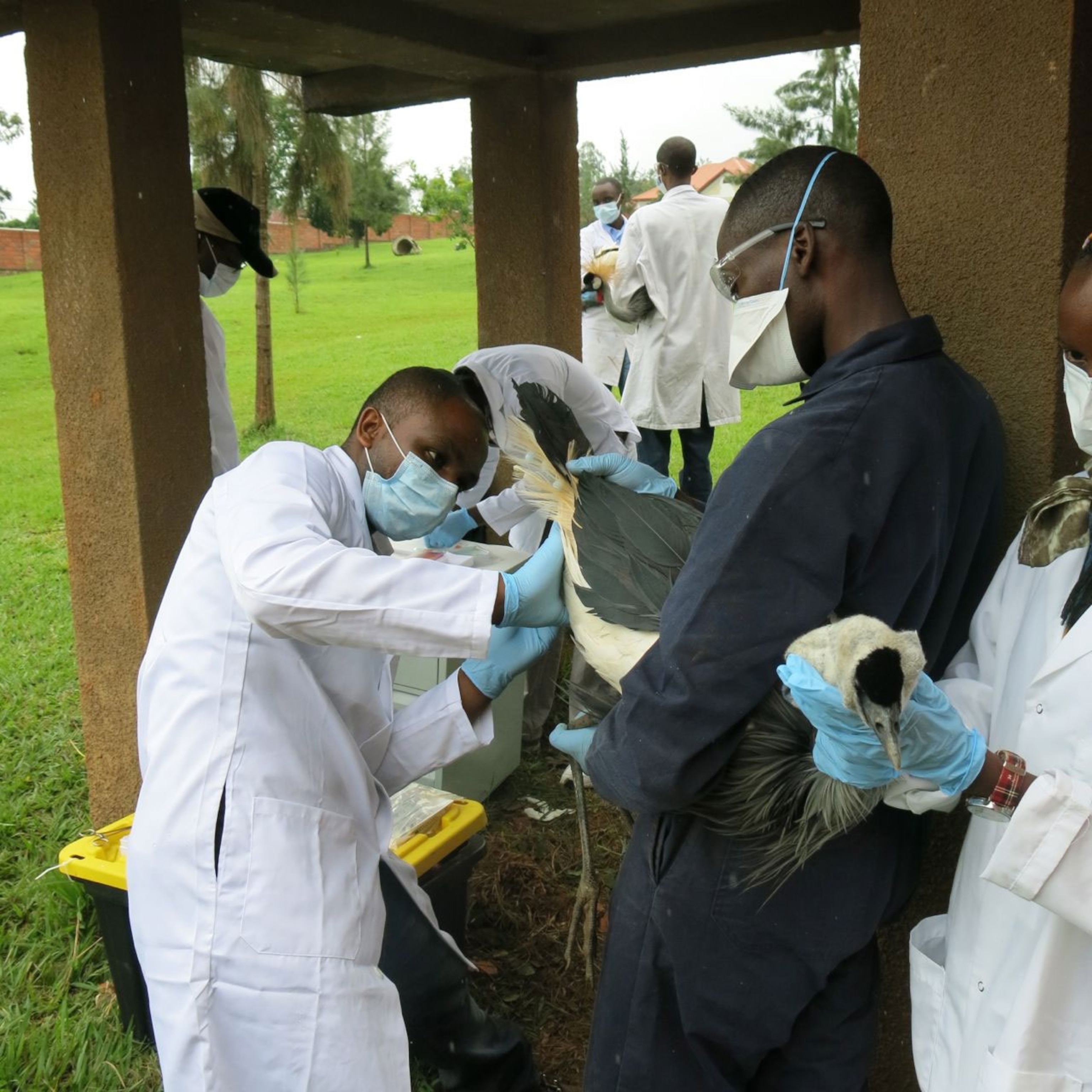
Combined with a government amnesty on crane ownership and Nsengimana's efforts on a national media awareness campaign, workshops with local leaders, and other outreach programs, 216 gray crowned cranes in captivity have been identified and registered. So far, 98 have been reintroduced into Rwanda’s Akagera National Park.
“Seeing them fly again in their natural habitat, seeing some start to lay eggs and have chicks in the short time we’ve started this program really makes me happy,’’ says Nsengimana, a 2015 National Geographic Society conservation grantee.

“Before this program, Rwanda gray crowned cranes were threatened with extinction,’’ he says. “Now, it’s possible that we’ll see wild cranes thriving, expanding, and coexisting with humans.”
Next year, Nsengimana hopes to build an educational facility and crane sanctuary to house up to 60 disabled birds that would not be able to survive in the wild.
Saving more species appears to be part of Nsengimana’s DNA. His passion is something he wants to spread to fellow Rwandans.
“It's hard to think about what might come, but I want to extend conservation efforts to other species because so many are threatened,'' says Nsengimana, a 2016 Tusk Conservation Award finalist. “My aim is also to be a role model for young people, sharing my experience and training people to take the initiative to have impact on conservation and natural resources.”

